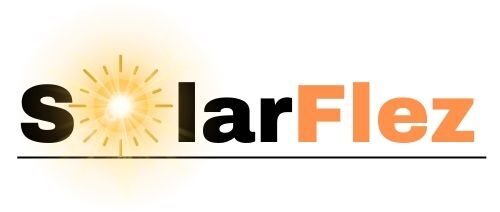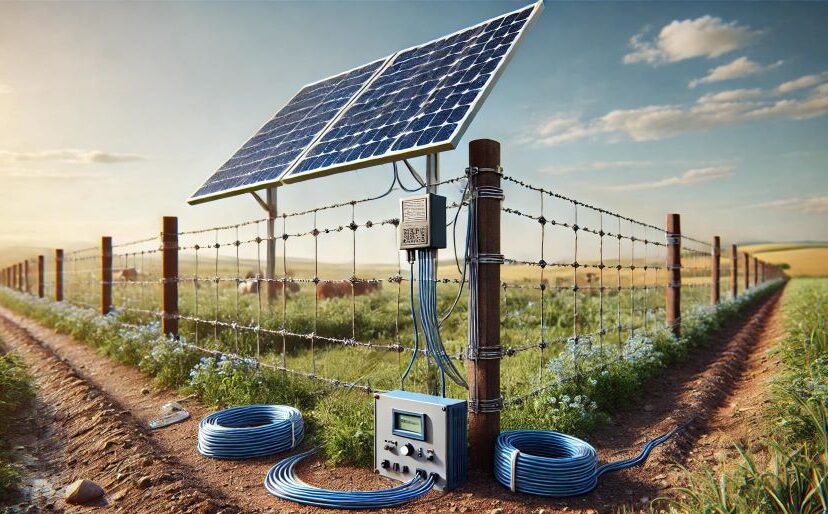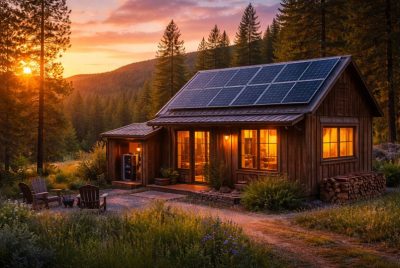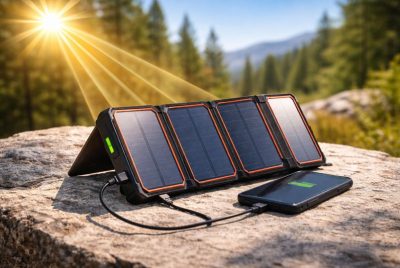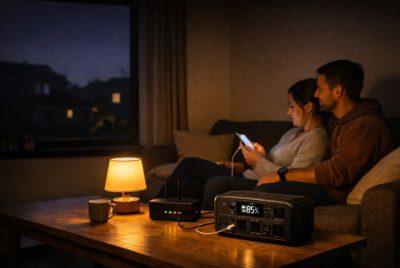Solar Power Electric Fence Guide
Alright, folks, grab a seat and let’s rap about something that’s been lighting up the eco-friendly world lately – solar power electric fence. Now, I know what you’re thinking, “Electric fences? Isn’t that some sci-fi mumbo jumbo?” But trust me, it’s as real as that sunburn you got last summer, and it’s pretty darn cool.
What in Tarnation is a Solar Power Electric Fence?
Picture this: you’re out on your ranch (because in my dreams, we all own ranches), and you’ve got this fence that’s not just keeping your cows from becoming roadside attractions, but it’s also soaking up the sun like it’s on a beach vacation. That’s right, we’re talking about fences that are working harder than my Uncle Bob at a free buffet.
These bad boys are like the Tesla of fences. They’ve got solar panels that are constantly chugging away, turning that sweet, sweet sunlight into electricity. This juice then powers up what’s called an energizer unit. (Sounds like something out of “Back to the Future,” right?) This energizer is the heart of the operation, pumping out high-voltage pulses through the fence wires.
How Does This Wizardry Work?
Now, don’t go thinking this is some kind of torture device. The shock these fences deliver is more like a strong static zap – enough to make you say “Yowza!” but not enough to do any real harm. It’s just there to remind Bessie the cow that the grass isn’t always greener on the other side.
(I once accidentally touched an electric fence as a kid. Let’s just say it was a shockingly memorable experience. Ba dum tss!)
During the day, those solar panels are working overtime, soaking up rays and converting them into DC electricity. This power gets stored in a battery or used right away to juice up the energizer. Then, the energizer does its thing, sending out pulses of high-voltage, low-current energy through the wires. Any critter (or unlucky human) that touches the fence gets a quick zap that’ll make them think twice about trying that again.
Why Should You Give a Hoot?
But here’s where it gets really groovy – these fences are like the hippies of the farming world. They’re all about that eco-friendly life, man. No need to plug into the grid or guzzle fossil fuels. Nope, they’re just vibing with the sun, doing their thing. It’s like they’re saying, “Hey Earth, we got you, bro.”
Let me break it down for you:
- Green as grass: These fences are powered by the sun, so they’re about as eco-friendly as your vegan cousin’s tofu burger.
- Easy on the wallet: While the upfront cost might make your wallet weep a little, in the long run, these fences are cheaper than my Aunt Edna’s famous “mystery casserole.” No electricity bills, minimal maintenance – it’s like the fence that keeps on giving!
- Versatile as a Swiss Army knife: Whether you’re in the boonies with no power lines in sight or just want a temporary setup, these fences have got you covered.
- Low maintenance: Unlike your high-maintenance ex, these fences don’t need much attention. Just a quick check now and then, and they’re good to go.
- Flexible as a yoga instructor: Need to change your setup? No problemo! These fences can be moved and adjusted easier than you can say “electric boogaloo.”
(Sometimes I wonder if I could power my whole house with solar panels. Imagine never having to pay an electric bill again! A guy can dream, right?)
Picking the Perfect Solar Power Electric Fence
Now, before you go running off to slap one of these babies on your property, let’s talk shop about choosing the right system. It’s like picking out a new car – you want something that fits your needs and won’t leave you stranded.
First up, you’ve got to think about the energizer capacity. This bad boy needs to match the length of your fence, or you’ll end up with a barrier about as effective as a screen door on a submarine.
Next, consider the battery life and capacity. You want a deep-cycle battery that can handle the solar lifestyle. It’s like picking a marathon runner instead of a sprinter – you need something with endurance.
When it comes to solar panels, efficiency is key. Look for panels with high-efficiency ratings, especially if you live somewhere that’s cloudier than Seattle in November.
Durability is another biggie. Your fence components need to be tougher than a two-dollar steak, ready to face whatever Mother Nature throws their way.
Lastly, some systems come with fancy features like remote monitoring or adjustable settings. It’s like having a smart home, but for your fence. Pretty nifty, huh?
Setting Up Your Solar-Powered Force Field
Setting up one of these high-tech barriers isn’t rocket science, but it does require a bit of elbow grease and planning. Here’s the lowdown:
- Scope out your turf: Figure out where you want your fence to go. It’s like planning a road trip – you need to know your route.
- Design your fence layout: Sketch it out like you’re a five-year-old with a crayon. Just make sure it makes sense.
- Install those solar panels: Find a spot where they can soak up the most rays – like positioning yourself at an all-you-can-eat buffet, it’s all about maximizing exposure.
- Set up the energizer unit: Put this bad boy somewhere sheltered but accessible. Think of it as finding the perfect man cave – protected but easy to get to.
- String up those wires: Run your fence wires along your planned route, connecting them to the energizer like you’re setting up Christmas lights.
- Test it out: Before you let loose the livestock, give it a whirl to make sure it’s working properly. You don’t want to find out it’s busted when Bessie’s already halfway down the road.
Keeping Your Fence in Tip-Top Shape
Now, like any relationship, your fence will need some TLC to keep the spark alive. Here’s how to keep things running smoother than a greased pig:
- Regular check-ups: Give your fence the once-over now and then. Look for any damage or wear and tear.
- Keep those panels clean: Dust and grime on your solar panels are like sunglasses on a solar cell – they block the good stuff. Keep ’em clean!
- Watch those battery levels: Check your battery charge regularly. A dead battery is about as useful as a screen door on a submarine.
- Trim the vegetation: Don’t let your fence turn into a jungle gym for plants. Keep the area clear to avoid any shorts or shading issues.
When Things Go Haywire
Even the best fences can have their off days. Here are some common hiccups and how to fix ’em:
- Low voltage: Could be a dirty solar panel, a weak battery, or a loose connection. Time to play detective!
- Animal shenanigans: Check for any spots where critters might be sneaking through. They can be craftier than a fox in a henhouse.
- Weather woes: Make sure everything’s battened down and weatherproofed. Mother Nature can be a real party pooper sometimes.
Top-Notch Products for Your Solar Fence Needs
If you’re in the market for a solar power electric fence system, here are some crowd favorites:
- Zareba Solar Electric Fence Charger: This thing’s tougher than a two-dollar steak and can handle fences big and small.
- Patriot Solar Electric Fence Energizer: Whether you’re corralling cows or keeping out coyotes, this energizer’s got you covered.
- Gallagher S15 Solar Fence Energizer: Known for being user-friendly and efficient. It’s like the smartphone of fence energizers.
The Science Behind the Zap
Now, I know some of you nerdy types out there (no judgment, I’m one too) might be wondering about the science and research behind these solar fences. Well, buckle up, buttercup, ’cause I’m about to drop some knowledge on you.
There’s been a bunch of eggheads studying these fences, and let me tell you, the results are pretty darn impressive. A study in the Journal of Wildlife Management back in 2018 found that these solar-powered zappers were super effective at keeping wildlife out of protected areas. It’s like they put up a “No Trespassing” sign that animals actually listen to!
Another study in 2020 looked at how sustainable and efficient these fences are in the middle of nowhere. Turns out, they’re like the Bear Grylls of fences – thriving where others would fail.
And get this – some number crunchers did an economic analysis in 2021 and found that while these fences might make your wallet a bit lighter at first, they end up saving you more dough than a coupon-clipping champion in the long run.
(You know, sometimes I think about how far we’ve come. From simple wooden fences to these solar-powered marvels. What’s next? Fences that can teleport intruders away? Now that would be something!)
Wrapping It Up with a Bow
So there you have it, folks – solar power electric fences in a nutshell. They’re eco-friendly, they’re cost-effective, and they’re tougher than a cowboy’s calluses. Whether you’re trying to keep your livestock in check, protect your crops from Bambi and his pals, or just want to feel like you’re living in the future, these fences are where it’s at.
Remember, setting up one of these high-tech barriers isn’t rocket science, but it does require a bit of planning and some good old-fashioned elbow grease. And once you’ve got it up and running, a little TLC goes a long way in keeping it in tip-top shape.
So, next time you’re driving down a country road and see a fence with a solar panel, give a little nod to the future of farming. It’s not just a fence – it’s a small step towards a greener, more sustainable world. And who knows? Maybe one day we’ll all be living in solar-powered houses, driving solar-powered cars, and yes, protected by solar-powered fences. Now that’s what I call a bright future!
FAQs
1. What is a solar power electric fence?
A solar power electric fence is a type of electric fence that uses solar panels to convert sunlight into electricity. This electricity powers the fence, providing a continuous and renewable source of energy to keep animals contained or to protect property.
2. How does a solar power electric fence work?
A solar power electric fence works by converting solar energy into electrical energy through solar panels. This energy is stored in a battery and used to power the fence. When an animal or intruder touches the fence, they receive a mild electric shock, which deters them from crossing the boundary.
3. What are the benefits of using a solar power electric fence?
- Cost-effective: Once installed, the energy from the sun is free, reducing operating costs.
- Eco-friendly: Solar power is a renewable energy source, making it environmentally friendly.
- Remote operation: Ideal for remote areas where traditional power sources are unavailable.
- Low maintenance: Solar panels and electric fences require minimal upkeep.
4. How do I install a solar power electric fence?
Installation involves setting up the fence posts and wiring, mounting the solar panel, and connecting the battery and energizer. It’s important to follow the manufacturer’s instructions and ensure that the solar panel is positioned to receive maximum sunlight.
5. What kind of maintenance does a solar power electric fence require?
Regular maintenance includes checking the battery charge, ensuring the solar panel is clean and unobstructed, and inspecting the fence wiring for any damage. It’s also important to periodically test the fence’s voltage to ensure it’s functioning correctly.
